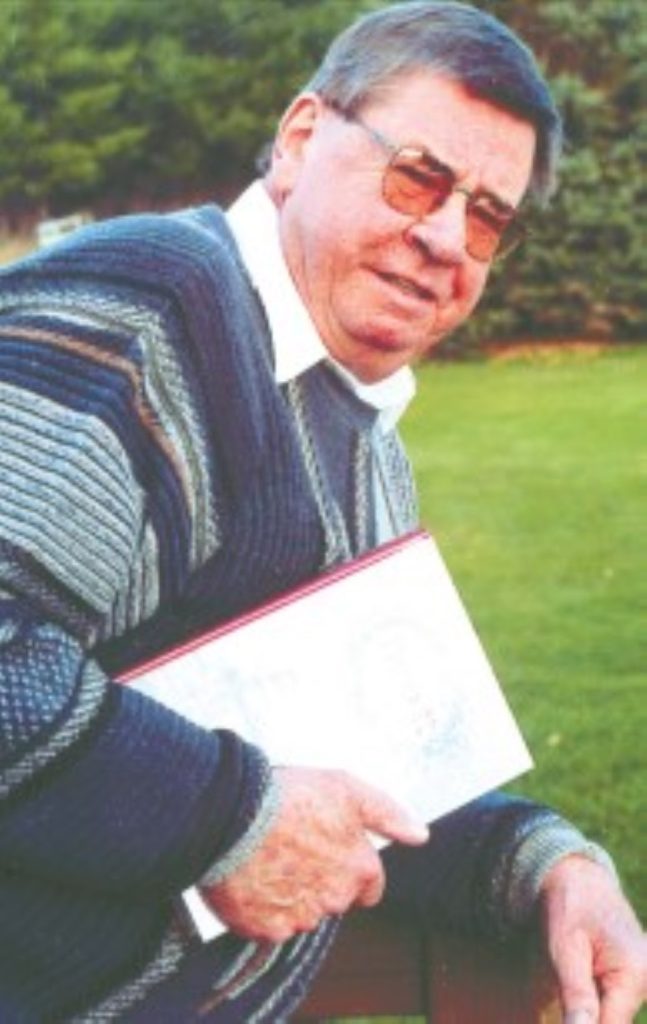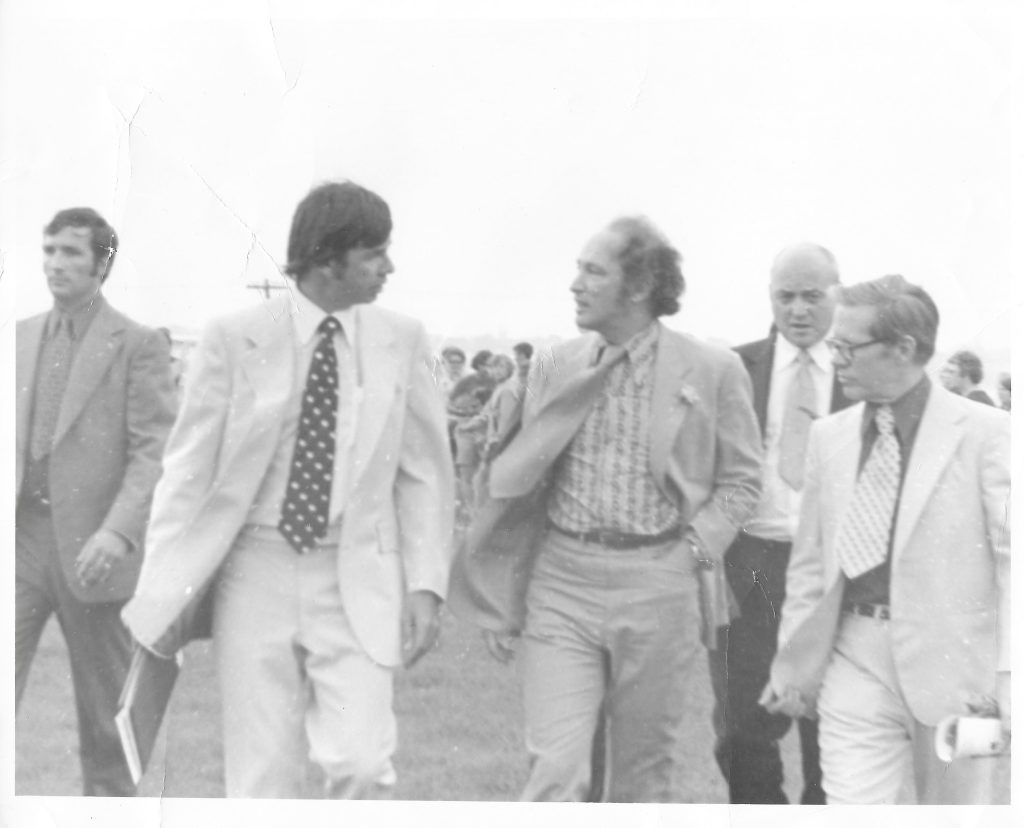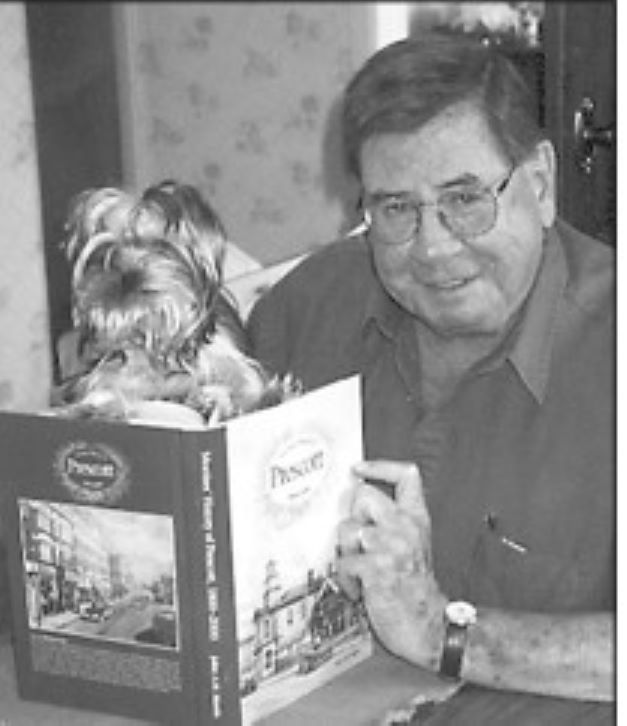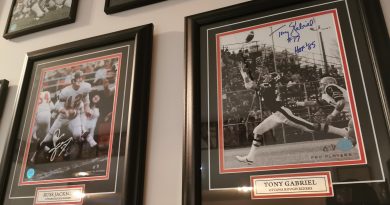20 years ago: Media icon and Independent founder passes away
From our archives – Barrhaven Independent, June 11, 2004
The town of Prescott lost a true man of the community Saturday, June 4, 2004 as longtime Prescott Journal publisher and Barrhaven Independent owner and founder John A. H. Morris passed away peacefully at the Brockville General Hospital after a lengthy illness.
Morris, in his 69th year, also had owned the Winchester Press, Manotick Messenger, Leeds and Grenville Business News, Osgoode & Rideau Packet, Tupper Lake (NY) Free Press and Gouveneur (NY) Tribune Press.
He was also noted locally for his work as an author.
Morrises’ History of Prescott – 1800-2000 is a 540-page hardcover book that has been recognized as the benchmark of smalltown history books in Ontario.
Morris followed the footsteps of his father, the late John A. “Jack” Morris, into journalism.
The family’s association with the newspaper business started in Chesterville, Ont.,
in 1926 when 17-year-old Jack Morris, who had come to Canada as a three-year-old with his family from East Yorkshire, UK, in 1912, graduated from Chesterville High School and joined the staff of the Chesterville Record as a printer’s devil.
By the time he left the Record in 1940 to join the Canadian army, he had become the weekly newspaper’s reporter, editor, linotype and press operator and compositor, graduating from the faculty of printer’s devils magna cum laude.
The senior Morris, who received his discharge from the army in 1946 as a major, resumed his printing and publishing career as editor of the Prescott Journal, becoming co-publisher in 1959.
In the meantime, his son John had picked up the basics of the printing trade in the Chesterville and Prescott printing shops as a pre-teen and teenager, and broke into the editorial side of the business by editing his high-school newspaper when he was only 15.
He continued his newspaper studies in the journalism department of the Ryerson Institute of Technology School of Graphic Arts.
Morris, before his passing, said he could not remember a time when he wasn’t involved in newspapers. His involvement in newspapers goes back more than 60 years.
“I have some fond memories of the Chesterville Record and some painful ones,” Morris recalled. “When I was about six, I used to go to the office on Thursdays to help — at least I thought I was helping – to fold and cut the paper after it came off the old flatbed press.
“It came off in one large sheet, with four metro pages on each side, was folded twice and then the top spine was slit with a string held in place on one of the large composing tables by a nail.
‘Dad used to let me slit some of the papers and occasionally the publisher, George C. Lacey, would reward my efforts with a nickel. That would buy an Opera Cocktail soft drink or a large bag of Planter’s Peanuts. During the war years, five nickels bought you a War Savings Stamp to stick in your savings book.”
And the painful memories?
“It was in the winter of 1941 and I was playing with some of my friends in front of the Record office, waiting to walk home with Dad at six o’clock. We had our sleighs and were pushing each other up and down the street. One of the sleighs ran into me from behind and I broke my collar bone when I hit the sidewalk.
“Dr. Justus was called to the office where he set the broken bone and strapped my back to a board to immobilize me during the healing process. All this with no drugs or painkillers. And as far as the ‘There, there, now, this won’t hurt’ goes, it hurt like hell.”
Move to Prescott
Following his discharge from the Canadian army in 1946, John’s father returned to the Record for a short time before accepting the job as editor of the Prescott Journal.
The family moved to Prescott in 1947 and John’s apprenticeship on a weekly newspaper continued on a part-time basis.
“One of my regular jobs over the next few years was to strip plates — yes, we saved the nails — and using the hardwood mounting boards for fuel, melted the plates down into lino slugs in a special stove that had a melting pot built into the top. I ladled the molten metal into iron moulds and made ingots for the linotype.”
While learning the printing trade, Morris also began his career as a writer. At 13, he began writing for the school newspaper and served as the paper’s editor at Prescott High School for three years. It was in his final year at Prescott High School that Morris decided to pursue a career in journalism.
“I decided that if I was going to study journalism, I wanted to stay in the weekly newspaper business,” he said. “I came to the conclusion when I looked at my hometown and saw the best three jobs were the doctors, lawyers and newspaper publisher. Money and brains ruled out the first two, but I figured I had enough bull—— to become a publisher.”
Morris decided to go to Ryerson Institute of Technology, a school that catered to the weekly newspaper business with its mix of journalism and graphic arts. The other influencing factor, he said, was that Ted Toogood and Bruce Forsythe were starting a football program at Ryerson and were offering favours to prospective players. Morris excelled in football as a student athlete at Ryerson.
After leaving Ryerson, Morris was hired by Ontario Hydro and was given the responsibility of starting and editing a weekly employee newspaper for the 6,000 persons employed on the St. Lawrence Power Project, over a 40- mile stretch between Prescott and Cornwall.

After almost three years with the St. Lawrence Power Project newspaper, John purchased the Kemptville Advance in 1957 from the late Fred J. Friend, building it into one of the better smalltown weekly newspapers in Eastern Ontario before selling it in 1964 to join his father in purchasing outright the Prescott Journal and Cardinal News and their parent firm, St. Lawrence Printing Company Ltd.
John took over the responsibilities of editor and publisher of the two newspapers while his father managed the company’s commercial printing operation and devoted much of his time researching and writing the first history ever published about the Town of Prescott. It was published in 1968.
Becoming a Tory
“I took over the Kemptville Advance the first week of August, 1957, and when I arrived at the office, at 7:30 a.m., there were two older and distinguished gentlemen sitting on the front steps and blocking my entrance to the building,” Morris recalled. “One introduced himself as the reeve and chairman of the village’s PC Association, and the other was the Grand Master of the Masonic Lodge, which rented the second floor of our building and was, next to the local PC Association, the second most influential organization in the village.
“After some brief introductions, the reeve stepped over and blocked the doorway, and said, ‘This newspaper was revived in the late 1930s by former Ontario Premier G. Howard Ferguson and has been a strong supporter of the party ever since. If you’re not going to continue this tradition, sonny, then don’t even bother to hang up your hat ‘cause you won’t last two weeks in this town.’
“Well, when you’re 21, have a couple of years of pro and semi-pro football under your belt, and still pack a solid 225 pounds on a six-foot frame, you don’t take too kindly to being pushed around by two corpulent Conservative pork barrellers.
“But, on the other hand, when you’re $25,000 in debt and haven’t even started your first day on a job you know very little about, your fuse is just a wee bit long.
“So I sucked up my gut, looked them right in the eye and became the best god-damned Tory in town!”
Morris bought the controlling interest of the Advance in 1958 and also met his future wife, who was then a math teacher at Kemptville High School and moved on to teach at South Carleton High School. John and Beth were married in August 1959. They honeymooned in Cuba over the Christmas holidays. Rather than going home immediately with Beth, John was hired by the Toronto Telegram newspaper to stay in Havana and cover the revolution.
They moved to Prescott in 1964 with their two young children and sold the Kemptville Advance to two of his employees in order to become a partner with his father at the Prescott Journal. Not only did Morris follow his father’s footsteps upon his return to Prescott, but he also followed his footsteps into playing a pivotal leadership role as a volunteer in the community. His parents, Jack and Ida Morris, were both visible in their community involvement.
Their son would soon follow with his work to grow and promote business and tourism in Prescott.
Morris served as a school board trustee on both the Prescott Public School Board and then the South Grenville District High School Board. He was Director of the Prescott and District Chamber of Commerce for over 30 years, serving five terms as president.
Friendship With Walter Baker
One of his friends through the 1960s and 1970s in Prescott was a familiar name in Barrhaven, Walter Baker. Until 1976, the local political riding was Grenville Carleton, which stretched from Nepean down to the St. Lawrence River.
In 1967, Morris served as Chairman of the Prescott Centennial Committee and organized the town’s weeklong celebration for Canada’s Centennial. Morris organized Prescott’s first Military Pageant at Fort Wellington, which, for 25 years, was the largest period military display of its kind in Canada.
Morris also arranged for the 1973 visit of the tall ship replica, The Nonsuch, to Prescott. This was the first visit to Prescott by a tall ship in modern times and was highlighted by a mock naval battle between The Nonsuch and Fort Wellington, whose cannons were manned by period artillery units from the Fort Henry Guard.

During these events, he hosted Canadian Prime Minister Pierre Elliott Trudeau.
Morris also organized the Canadian Olympic Torch Relay ceremony as it passed through Prescott in 1976.
Although he was a known Conservative, he was also friends with former Liberal MP Gordon Blair, who was defeated by Baker in the 1972 federal election. Morris often talked about how his home was the only place where Baker and Blair could visit together on social terms and be friends rather than political rivals.
Newspaper Company Grows
When Jack Morris retired in 1976 after 50 years in the weekly-newspaper business his youngest son Robin joined John as a junior partner.
In their first major expansion they purchased the Chesterville Record, 50 years after their father started his career there. The Morris family’s next move was to purchase the Tupper Lake (NY) Free Press in 1977, and the next year they started the Eastern Ontario Agrinews, a monthly publication that became the premier agriculture newspaper in Eastern Ontario.
The Winchester Press was added to the family’s growing group of weeklies in 1981.
It was while making regular visits to the Winchester operation that company president John Morris started visiting the rapidly growing Manotick area on a regular basis, acting on the advice of his Winchester advertising staff who were developing a base of regular advertisers there.
Morris worked with community volunteers who ran a newsletter called the Manotick Messenger and eventually turned it into a weekly newspaper.
Many of the Messenger’s advertisers were businesses in Barrhaven, particularly at the Barrhaven Mall on Greenbank Road. In 1989, Morris laid the groundwork for the creation of the Barrhaven Independent. He worked closely with Barrhaven Community Association members Tom O’Neil, Judy Hardiman, Doug Collins and Jan Harder to get Barrhaven’s newspaper off the ground.
Since their inception, the Messenger and Independent, operating as sister newspapers, have combined to win more than 100 Ontario Community Newspaper Association awards.
Although the Morris newspaper business was expanding beyond Prescott, he continued to play a major role in the community.
Locally, he was involved with the organization of Prescott’s Downtown Business Improvement Area and served as the Chairman for the committee responsible for the re-organization of the South Grenville Economic Development Commission for eight years.
He also lobbied the federal government to introduce reenactors at Fort Wellington, thus turning it into a living museum and increasing its annual attendance by over 1000 per cent.
Lobbying for 416
Morris was responsible for organizing the committee responsible for forming the Highway 416 Citizens Coalition, which carried out successful lobby for the construction of Highway 416 as a four-lane highway, from Johnstown to Ottawa. The highway was west of Barrhaven, but the community grew toward the highway as it became a border for the community.
Through the years, Morris has been recognized for his work in newspapers and in the community. He was the recipient of the Prescott and District Chamber of Commerce Community Service Award for volunteer work in the community, in 1980.
He served on the Ontario Community Newspaper Association Board of Directors for 20 years and in 2002 was presented with his “Golden Quill Award” by the Canadian Community Newspaper Association for 50 years service in the community newspaper industry.
In 2002, he was also the recipient of the Grenville County Historical Society Award of Merit for his work over the years in researching and promoting and in making local citizens aware of the importance of Prescott’s colourful history.
In 2003, Morris received his most prestigious award when he was presented with the Queen’s Golden Jubilee Medal by MPP Bob Runciman at a ceremony at the Royal Brock Hotel in Brockville.
Summing up his own career, Morris said, “I proved I didn’t need money or brains to become a publisher!”






